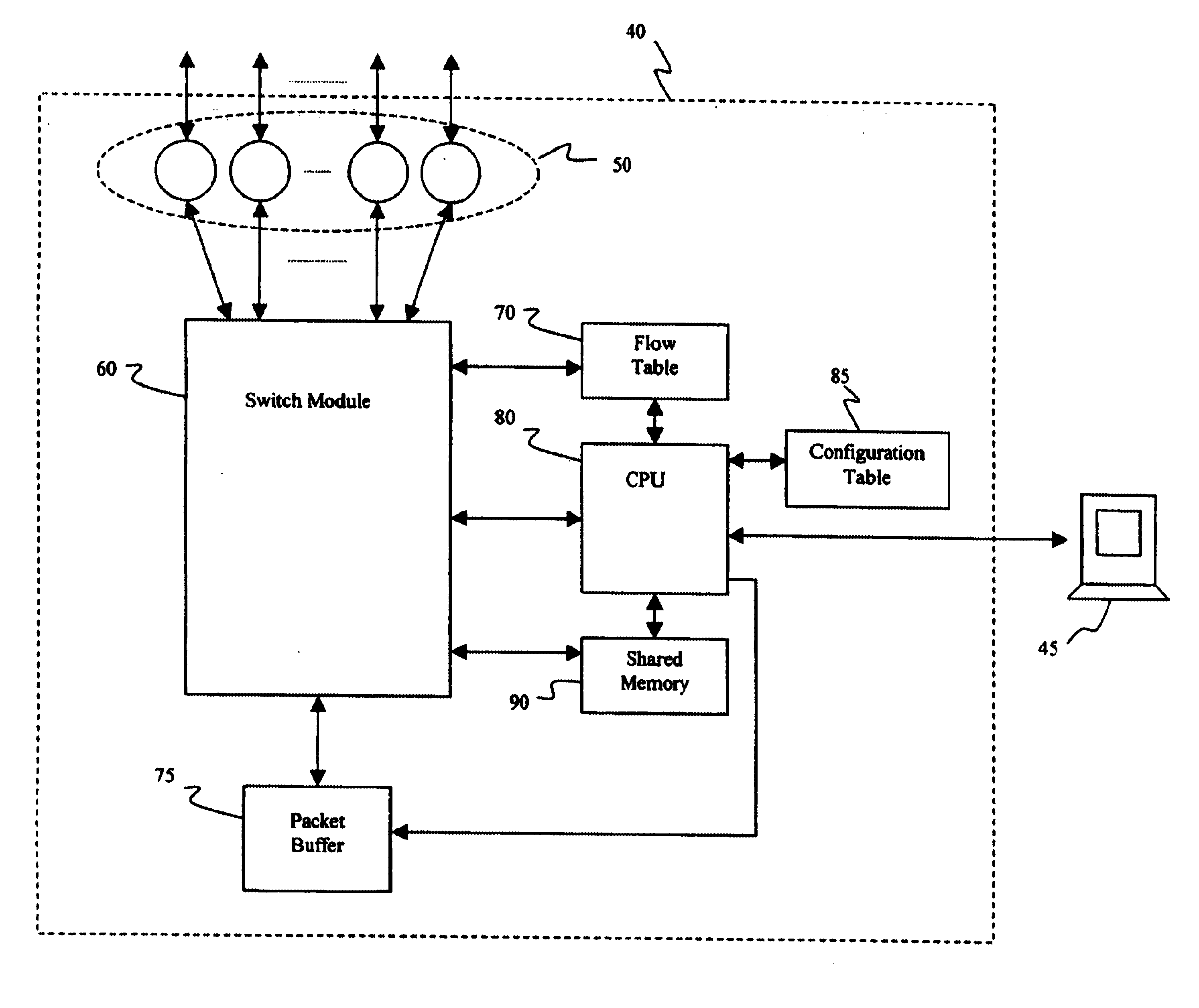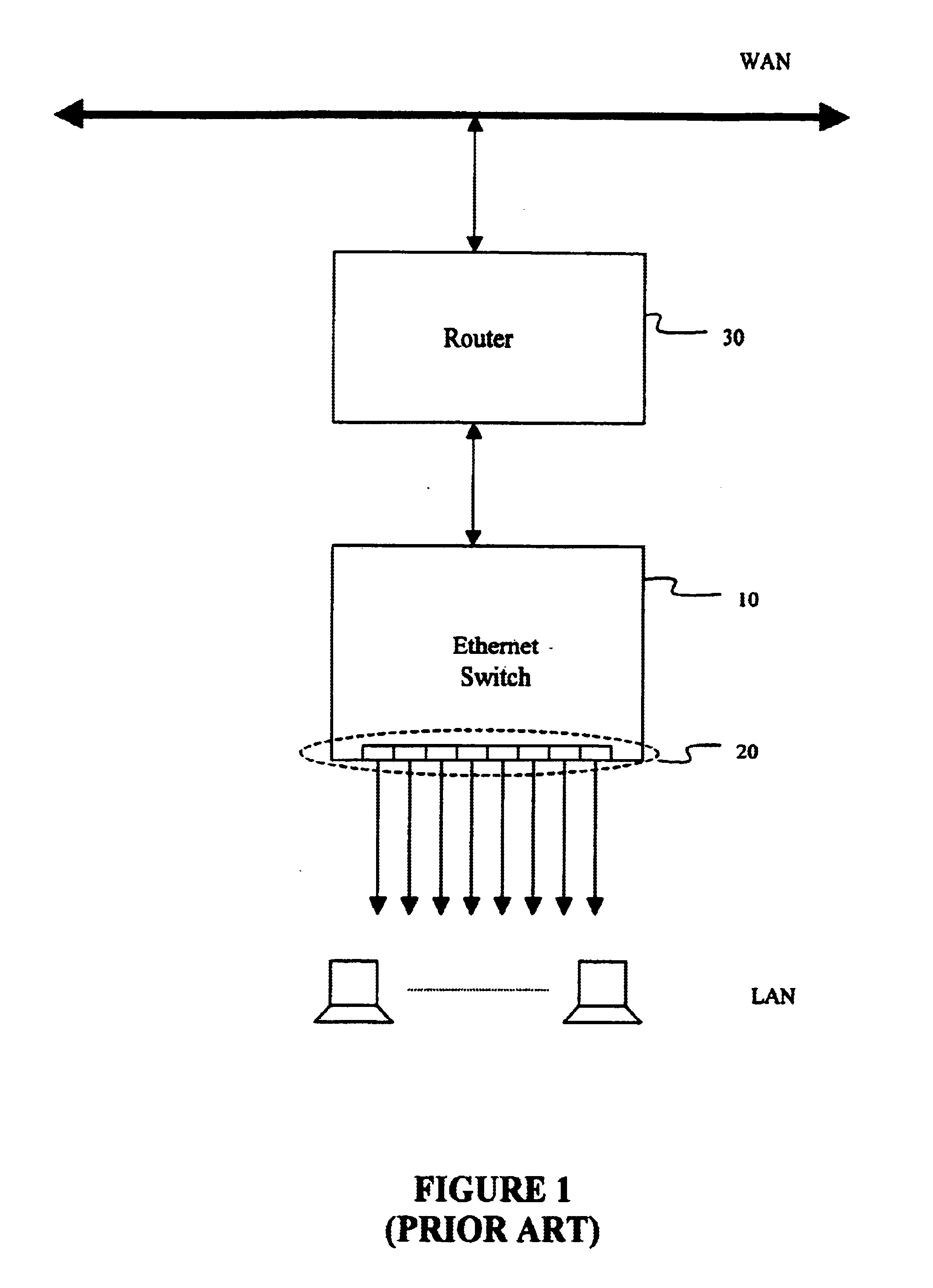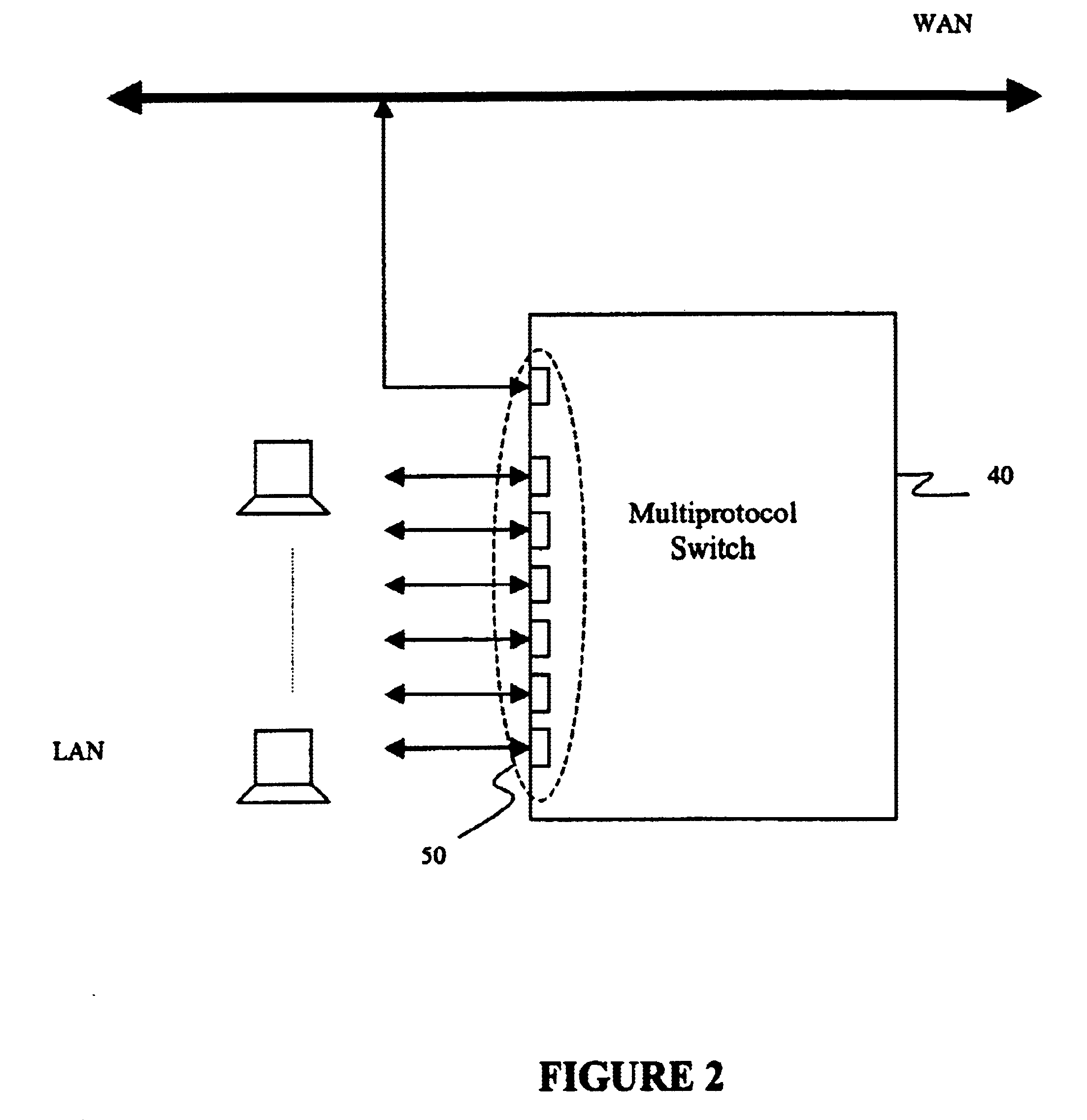Method and apparatus for multiprotocol switching and routing
a multi-protocol, switching and routing technology, applied in data switching networks, multiplex communication, digital transmission, etc., can solve the problems of limiting the rate at which traffic can be sent over the network, requiring substantial processing overhead, and not being able to interconnect routed networks and network segments running multiple protocols, etc., to achieve efficient partitioning, reduce processing overhead, and reduce costs
- Summary
- Abstract
- Description
- Claims
- Application Information
AI Technical Summary
Benefits of technology
Problems solved by technology
Method used
Image
Examples
Embodiment Construction
FIG. 2 is a block diagram illustrating an architecture for performing multiprotocol routing in accordance with the principles of the invention. It includes a multiprotocol switch 40 having N input / output ports 50-1 . . . 50-N. In accordance with an object of the invention, as illustrated in FIG. 2, the input / output ports can be attached to nodes or they can be attached to different network segments or different networks in a local area network (LAN) directly or via routers. The novel ability of the multiprotocol switch of the present invention to forward packets among and between local nodes and external networks attached to it will be described below.
FIG. 3 further illustrates a multiprotocol switch 40 in accordance with the principles of the invention. In addition to input / output ports 50, it includes a switch module 60 and a flow table 70. Switch module 60 further communicates with a packet buffer 75, a CPU 80 and a shared memory 90. Flow table 70 and shared memory 90 are mapped ...
PUM
 Login to View More
Login to View More Abstract
Description
Claims
Application Information
 Login to View More
Login to View More - R&D
- Intellectual Property
- Life Sciences
- Materials
- Tech Scout
- Unparalleled Data Quality
- Higher Quality Content
- 60% Fewer Hallucinations
Browse by: Latest US Patents, China's latest patents, Technical Efficacy Thesaurus, Application Domain, Technology Topic, Popular Technical Reports.
© 2025 PatSnap. All rights reserved.Legal|Privacy policy|Modern Slavery Act Transparency Statement|Sitemap|About US| Contact US: help@patsnap.com



